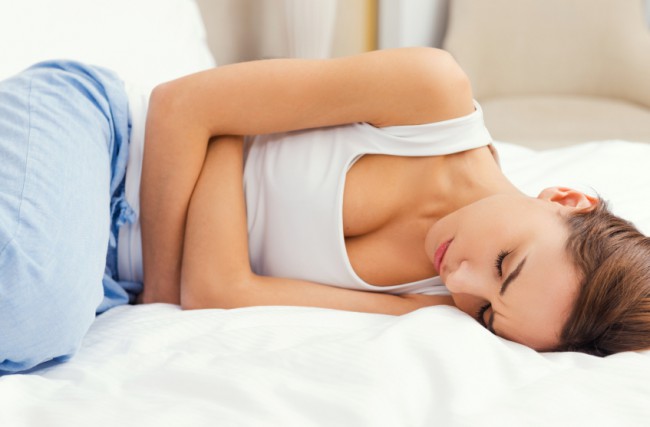When it’s that time of the month, menstrual pain can be disruptive to a woman’s lifestyle. Taking over-the-counter pain relievers can sometimes help. But what can you do to naturally support healthy menstruation and mitigate the pain of cramps?
In Western health practices, painful periods are also called dysmenorrhea. If there is no observable cause for the menstrual pain, it’s called primary dysmenorrhea. (If a woman has a condition known as endometriosis, or other pelvic pathology, the menstrual pain associated with it is called secondary dysmenorrhea.) Most primary dysmenorrhea is limited to temporary pain and cramping during the first 48 to 72 hours of a woman’s period. Natural solutions to support healthy menstruation are most helpful in primary dysmenorrhea.*
Prostaglandin support
All women have changes in their hormones with their periods, but some women produce more pro-inflammatory-hormone-like substances called prostaglandins. The good news is that prostaglandin health may be supported by the consumption of healthy dietary fats.* These fats are found in cold water fish, fish oil, flax oil, walnuts, pumpkin seeds, hemp seeds, and chia seeds. For general health support, you could also take an omega-3 supplement. Look for a formula that provides a minimum of 200 mg of eicosapentaenoic acid (EPA) and 200 mg of docosahexaenoic acid DHA per day.
Make magnesium a priority
Eating magnesium-rich foods may help to support naturally healthy menstruation.* When you have your period, your uterus — a smooth muscle — contracts. Magnesium is a mineral that plays a part in muscle contraction and relaxation. Foods high in magnesium include zucchini, summer squash, snow peas, artichokes and leafy greens such as Swiss chard, spinach, beet greens, arugula and mustard greens. If you take a magnesium supplement, remember that taking too much magnesium citrate could cause loose stools. If that happens, try taking a lower-dosage supplement.
Go ginger
From the Eastern perspective, menstrual cramps are perceived as a stagnation of Qi (vital force) and blood. For centuries, practitioners of Chinese health practices have recommended that women drink strong ginger tea as an adjunct to supporting healthy menstruation.* An excellent organic tea is Ginger Aid by Traditional Medicinals, or you can make your own tea by simmering 3 tablespoons of sliced ginger root in 6 cups of water for 15 minutes on low heat, cool, strain and drink a few cups a day. Add honey or agave syrup to taste, and enjoy!
Stay active
It is also advised that women exercise throughout the month, and do restorative “yin” exercises during their periods. Regular exercise like jogging, aerobics, hiking, weight lifting and dancing can help to decrease stagnation and increase blood flow, thereby supporting menstruation. Restorative yin exercises can help a woman to support circulation during her period, and at the same time nurture her body. According to Chinese medicine, when a woman is menstruating, it is a “yin time” of month, which means it’s a time to slow down, sleep, contract energetically and go inward. Restorative yin exercises like leisurely walking, gentle yoga, and tai chi are best suited for this time.
Acupuncture aid
Acupuncture is known for its ability to decrease pain, and has a long history of being effective in supporting women with their hormonal cycles and menstrual pain. To receive an acupuncture treatment, see a licensed acupuncturist who can insert very thin, sterile needles into specific points. The needles are typically left in place for 20 to 30 minutes. Treatments traditionally are done before a woman has her menses in order to prevent pain with her period and to ensure the smooth flow of Qi and blood. Acupuncture can also be effective if done at the same time that a woman is experiencing pain with her period.
Try these time-proven methods and make that “time of the month” a productive, peaceful, and pain-free experience.

